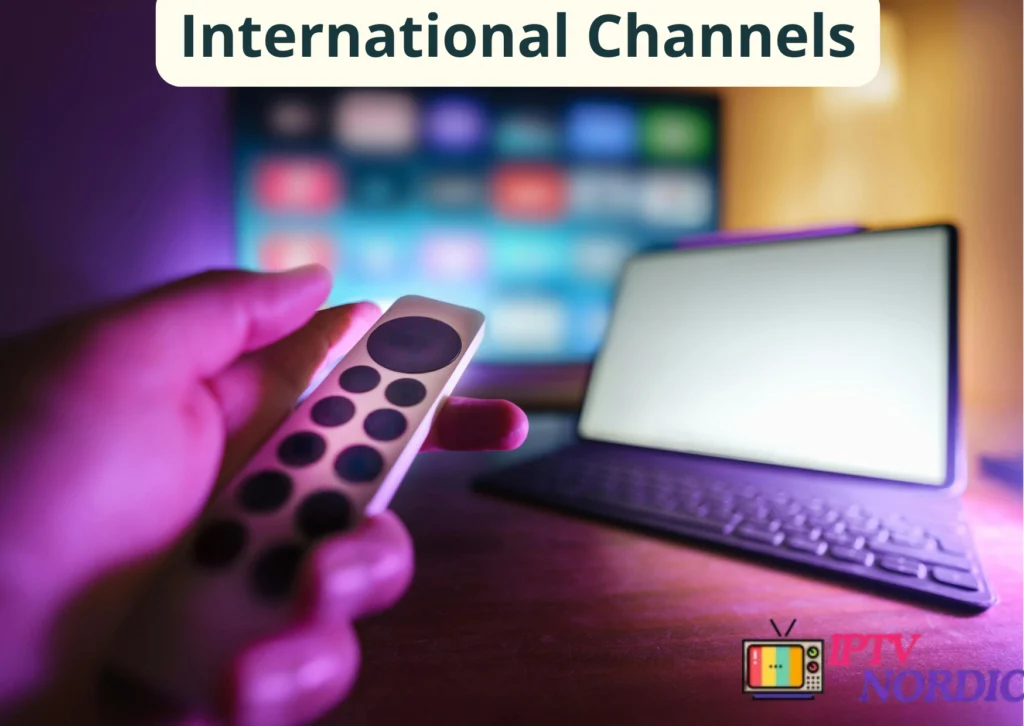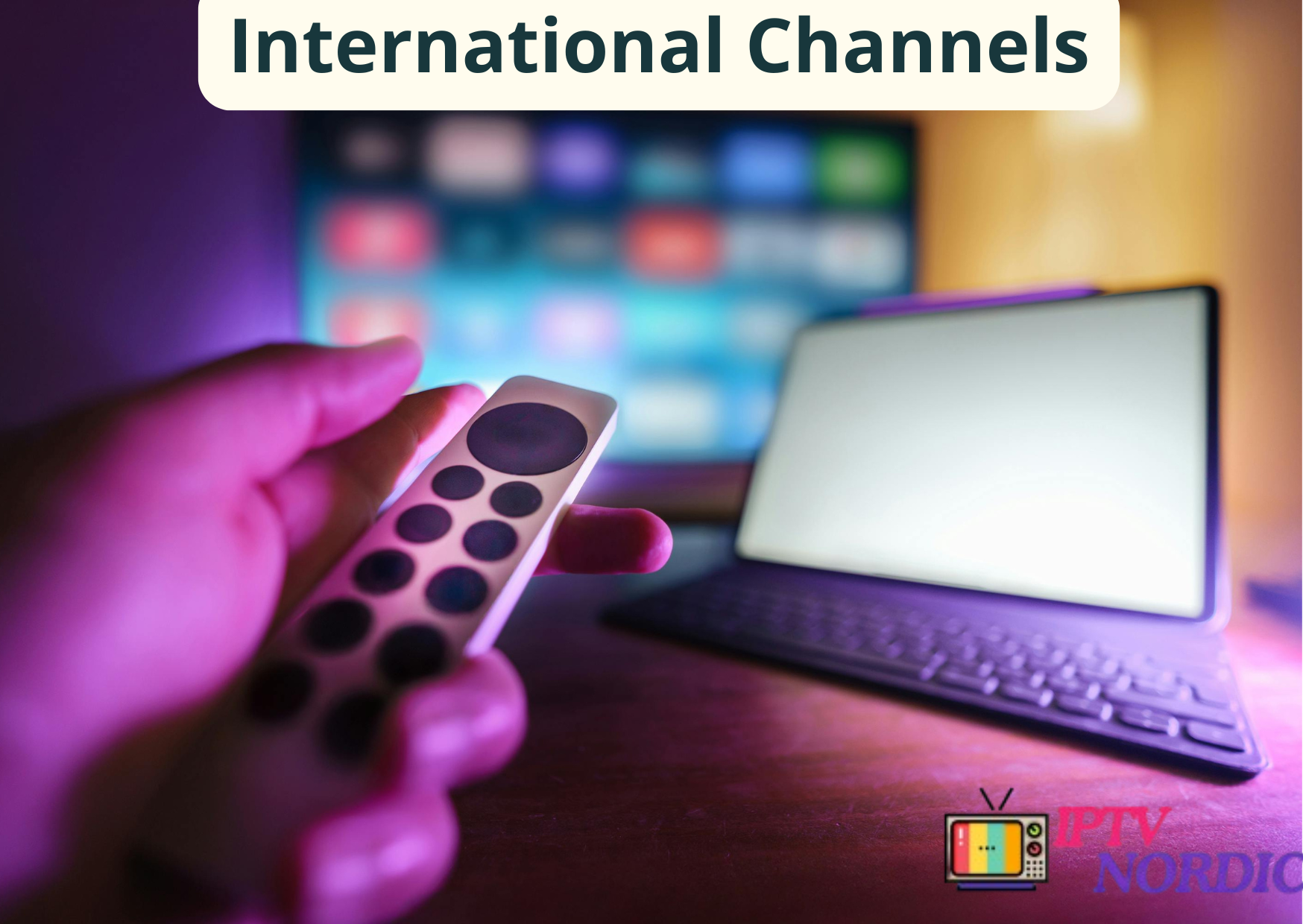Introduction to International Channels
What are International Channels?
International channels are television networks or streaming services that broadcast content across borders, offering diverse programming to global audiences. These channels cater to different genres, languages, and cultures, making them a vital resource for people seeking entertainment, news, and cultural exposure beyond their local boundaries. Examples include news networks like BBC World News and Al Jazeera, sports channels such as ESPN International, and entertainment networks like HBO and Netflix.

Growth in Popularity of International TV Content
The demand for international channels has grown significantly in recent years due to advancements in technology and globalization. Streaming platforms like Netflix and Amazon Prime have contributed to this surge by offering multilingual and culturally diverse content. Additionally, the rise of expatriate communities and migration trends has amplified the need for TV networks that cater to diasporic audiences seeking connections to their homelands.
How International Channels Connect Cultures
International channels play a unique role in fostering cross-cultural understanding. They serve as windows into the traditions, values, and lifestyles of various regions. For instance, international cooking shows introduce global culinary traditions, while documentaries highlight cultural histories. By bridging cultural gaps, these channels encourage mutual respect and appreciation among global audiences.
The Role of International Channels in Global Entertainment

Bridging Cultural Gaps Through TV
Television is a powerful medium for storytelling and cultural exchange. International channels create opportunities for audiences to experience the art, music, and literature of different nations. For example, K-dramas and Bollywood films have gained immense popularity worldwide, bringing South Korean and Indian culture into global conversations.
The Rise of Multilingual Content
Multilingual content is at the heart of international channels. From dubbing and subtitles to original productions in multiple languages, broadcasters strive to make their programming accessible. Services like Netflix offer audio and subtitles in various languages, enabling non-native speakers to enjoy content seamlessly.
Promoting Diversity in Entertainment
International channels challenge the dominance of Western-centric narratives in global entertainment. By showcasing stories from Asia, Africa, Latin America, and other regions, they enrich the content landscape. This diversity fosters representation and ensures that audiences worldwide can see their stories told authentically.
Popular International TV Channels and Networks
Top Global News Channels
International news channels like BBC World News, CNN International, and Al Jazeera offer comprehensive global coverage. They provide diverse perspectives on political, economic, and social issues, ensuring audiences stay informed about worldwide developments.
Leading International Sports Channels
Sports channels such as ESPN International, beIN Sports, and Eurosport deliver live coverage of international tournaments, catering to fans of football, basketball, cricket, and more. These channels also highlight lesser-known sports from various cultures, promoting global sportsmanship.
Popular Entertainment Networks Across Regions
Entertainment networks like HBO, AMC, and Sky Atlantic offer a mix of local and international shows, while platforms like Netflix and Disney+ provide an extensive library of globally acclaimed films and series. These networks have become cultural phenomena, with productions like Money Heist (Spain) and Squid Game (South Korea) gaining international acclaim.
Subscription Models for Accessing International Channels
Cable and Satellite Packages Offering Global Content
Traditional cable and satellite providers often include international channel bundles in their packages. These bundles cater to specific regions or interests, such as Asian drama, European sports, or African cinema.
Online Streaming Platforms for International Channels
The advent of streaming platforms has revolutionized access to international channels. Services like Hulu, Amazon Prime, and YouTube TV offer subscriptions that include live international channels, while dedicated apps like Crunchyroll focus on specific genres like anime.
Pay-Per-View and On-Demand Access
Pay-per-view (PPV) and on-demand options allow viewers to purchase specific events or shows without committing to a full subscription. This model is popular for international sports events like the FIFA World Cup or exclusive movie premieres.
Content Variety Across International Channels
News, Documentaries, and Educational Programs
International news channels keep viewers informed about global affairs, while documentaries explore topics like wildlife, history, and social issues. Networks like National Geographic and Discovery Channel excel in providing educational content.
Drama, Movies, and International Series
Drama series and films from countries like South Korea, India, and Turkey have captivated global audiences. Channels like MBC (Middle East Broadcasting Center) and Viki focus on sharing culturally rich stories with a global perspective.
Sports, Music, and Cultural Shows
Sports channels connect fans to international tournaments, while music networks like MTV Global introduce audiences to diverse musical genres. Cultural programs celebrate traditions, from dance performances to festival coverage.
Technological Aspects of Broadcasting International Channels
Satellite vs. IPTV for Global Channel Distribution
Satellite broadcasting ensures global coverage, making it ideal for regions with limited internet access. On the other hand, IPTV (Internet Protocol Television) provides high-quality streaming and interactive features for viewers with reliable internet connections.
Impact of Streaming Platforms on International Channel Access
Streaming platforms have democratized access to international channels, removing geographical barriers. They also enable personalized recommendations and offline viewing, enhancing the user experience.
Role of Internet Speed and Smart Devices
Accessing international channels often depends on internet speed and compatible devices. High-speed internet ensures uninterrupted streaming, while smart TVs and devices like Roku simplify access to global content.
Challenges in Accessing International Channels
Geoblocking and Regional Restrictions
Licensing agreements often lead to geoblocking, restricting access to certain channels in specific regions. Virtual Private Networks (VPNs) are frequently used to bypass these limitations.
Language Barriers and the Need for Subtitles
Language differences can hinder accessibility. Subtitles, dubbing, and voice-over options address this issue, enabling viewers to enjoy content from different cultures.
Licensing and Copyright Issues
Content licensing varies across regions, creating legal complexities for broadcasters. Copyright violations and illegal streaming further complicate the distribution of international channels.
Audience Demand for International Channels
Growing Interest in Global News and Perspectives
Audiences seek diverse perspectives on global events, driving demand for international news channels.
The Influence of Migration and Multicultural Communities
Migration trends and multicultural societies increase the need for channels that reflect the identities of diverse communities.
How Younger Audiences Are Embracing International Content
The digital-savvy younger generation actively consumes international content, exploring new cultures through platforms like TikTok, YouTube, and streaming services.
Legal and Regulatory Framework for International Channels
Licensing Agreements for Cross-Border Broadcasting
Broadcasters must secure licensing agreements to distribute content across borders, ensuring compliance with local laws.
Regional Laws Governing International Content Access
Each region enforces unique regulations for content accessibility, affecting how international channels operate.
Addressing Piracy and Illegal Streaming
Piracy undermines legitimate distribution, prompting broadcasters to adopt stricter anti-piracy measures and DRM (Digital Rights Management) technologies.
By exploring these aspects, international channels are shown to be vital in shaping global entertainment, bridging cultures, and enriching the television landscape.

